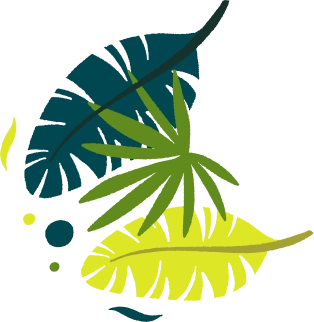


Finding Phong Nha Cave was a highlight of our northward journey through Vietnam. This famous cave - lies in Son Trạch commune, Bố Trạch district (Quảng Bình province), about 45 km northwest of Dong Hoi city. It’s accessed by boat from the riverside town of Phong Nha.
Below is a traveler’s guide to everything you’ll need in Phong Nha: how to get tickets, what to expect on the boat ride and in the cave, the best times to visit, tour options, and insider tips from fellow travelers with latest information as of May 2025.
Entry Fees: As of September 2025, an adult ticket to Phong Nha Cave is VND 150,000 (roughly US$6-7). Children under 1.3 meters tall enter free. There’s an additional fee for the boat ride: about VND 550,000 per boat (carrying up to 12 people).
In practice, groups often share a boat, splitting the cost. (Some local guides and agencies quote about VND 360,000-400,000 per boat if visiting Phong Nha and the neighboring Tien Sơn Cave.)
All payment is in cash - ATMs here can be unreliable, so bring notes from Dong Hoi or Dong Hoi Airport.
You cannot buy official tickets online in advance; tickets and boat passes are sold on-site at the Phong Nha boat station (just follow the signs in town) when you arrive.
Opening Hours: The Phong Nha boat station opens early at around 8:00 AM and runs until mid-afternoon (last boats leave by about 3:30-4:00 PM). The cave visit itself (boat trip + walking) takes roughly 2-3 hours, so plan to arrive well before noon. Officially the park’s visitor hours are about 7:30 AM to 5:00 PM daily, but no boats go after ~3:30 PM, so it’s safest to start in the morning. Tip: Arriving at the cave station early helps you beat later crowds. Many travelers advise going first thing in the morning if possible.
How to Get There: Most travelers reach Phong Nha via Dong Hoi (the provincial capital). Dong Hoi has a small airport and a train station on the north-south line. From Dong Hoi city center you can take a local bus or taxi about 45 km northwest to the village of Phong Nha (also called Sơn Trạch or Phong Nha-Ke Bang Town). Once in town, the boat station is on the Son River. If you come by motorbike (very common here), just follow the river upstream from downtown Phong Nha. The boat docks are easy to find by the cluster of souvenir stalls and ticket booths on the riverbank.
Visiting Phong Nha Cave always starts with a boat trip. Long wooden boats (often painted bright blue or red) will carry you from the riverbank into the jungle. Expect a peaceful 25-30 minute glide through the countryside and rice paddies on the Son River, with towering karst peaks on the horizon.
As you float along, keep an eye out for local life - farmers tending fields, water buffalo along the banks, and children fishing. The ride itself is part of the experience. On a sunny day you’ll see reflections of the hills in the water, and if you’re lucky the boatman might slow near a crocodile farm or village for a closer look.
Once you reach the mouth of Phong Nha Cave, the boat passes under a low rock canopy and enters the dim interior. The cool, humid air of the cave is a nice relief from the midday heat.
Overhead, the roof may hang only a few meters above the boat, which adds to the sense of adventure. Inside, spotlights (installed by the park) illuminate clusters of pale stalactites and stalagmites around you.
The green-tinted river, the rippling reflections on the ceiling, and shafts of light all make for an unforgettable entrance. The boats float silently in the still water, revealing a “cathedral” of natural stone in every direction.
When the boat reaches the end of the allowed stretch (usually about 1.5 km in), you’ll climb out onto a small sandy beach on the river’s edge - a surreal spot inside the cave. From here you can explore a short walking path. Unlike Paradise Cave (which has metal walkways), Phong Nha lets you wander freely on the sand and along a flat trail that loops back to the entrance.
The interior is full of towering columns and odd formations - some guides even point out shapes (like “the Lion” or “the Buddha”) in the rock. The entire chamber is softly lit by installed spotlights, often colored blue or green, highlighting the cave’s textures. It feels almost like walking in an underground cathedral.
About halfway through the cave you’ll board the boat again for the return trip. Many visitors choose to combine Phong Nha with Tiên Sơn Cave, which lies just beyond by a short hike. Boat operators often offer a package ride that lets you visit both in one go. (Tiên Sơn Cave is a dry cave higher up the hill; entry there costs an extra ~VND 80,000 for adults, but if you take the combined tour the extra boat charge is modest.)
For the truly adventurous, several operators run kayak tours of Phong Nha Cave beyond the tourist area. These can last 3-4 hours and take you further into the undeveloped underground river system by paddling under your own power. You’ll wear a life jacket and carry a flashlight - it’s a fun way to see deeper parts of the cave away from the main crowds.
The weather in Quảng Bình follows a monsoon pattern. Dry season (November-April) is generally the best time to visit Phong Nha, with cooler temps, clear skies, and little rain. During these months the cave is reliably accessible. Outside this window, especially October-December, heavy rains can raise the river level and even flood the cave entrance, forcing it to close. In fact, the Phong Nha tourism center notes that when the river rises and covers the cave mouth, visits become impossible.
Summer (June-August) brings hot, humid weather but often still relatively stable conditions. April and May can be humid with some showers. If you visit in the rainy season (May-September), build in extra flexibility. Some travelers still go to Phong Nha cave even in light rain, but tours may be postponed during storms. In short: try to plan your visit during the dry months to be safe.
You don’t need a formal guide or tour company to see Phong Nha Cave - it’s a public attraction. Most travelers just show up at the boat station, pay the fees, and hop on a shared boat with other visitors. Boat captains handle navigation; no special guide is required to access the first section of the cave. Tickets and boats are arranged on the spot, and in peak season you may queue briefly for a group boat.
That said, many local agencies offer organized tours if you prefer. Common options include half-day or full-day packages that bundle Phong Nha with nearby caves (Paradise Cave, Dark Cave, Tien Son, etc.) and often include hotel pickup or lunch. For example, some day tours advertised through operators like Oxalis or local Phong Nha firms will combine Phong Nha and Paradise Cave, covering transport and entry for you. These tours typically cost around $50-$70 per person.
If you only care about Phong Nha itself, you can save money by booking on site. Foreigner-focused ticket sites (GetYourGuide, Klook, etc.) do list boat tours, but remember those mark-ups cover service fees. We found it easiest to simply pay at the ticket office and share a boat. No online reservation is needed or accepted for the basic cave entry - it’s strictly pay-on-site only.
Arrive early. The boats run until mid-afternoon, but crowds build after 10 AM. Aim to get to the boat station around 8-9 AM. Locals and hotel staff all advise this.
Wear comfortable shoes. The cave floor is flat and easy, but you’ll be walking up to an hour. Sneakers or walking shoes are best. Avoid flip-flops or high heels.
Bring cash and essentials. There are ATMs in nearby Phong Nha town, but they can run out. Have Vietnamese dong for tickets, snacks, and tips. Also bring bottled water and insect repellent (it’s hot outside and there are mosquitoes near the river). The cave itself is cool, but you may want a light long-sleeve just in case.
Camera and dress. The cave is lit, but dim - a smartphone or camera will still get great shots of the colors on the rocks. You won’t need a flashlight once inside. The water and sandy shore can reflect light onto your photos. Many visitors say the cave lighting makes for spectacular photos (colorful columns everywhere).
Book a combined ticket if you want. If you have time, consider continuing to Tiên Sơn Cave (just a bit farther by boat). Many boatmen will take you onward, and you’ll only pay an extra VND 80,000 to enter Tiên Sơn. It’s another 30-minute walk through a drippy, jagged cavern and is worth a quick look.
Respect the cave. Do not touch the formations - the oils from your skin can damage them. The spotlights can make people want to reach out, but just stay on the paths and take pictures from a distance.
Other sights nearby: Many travelers combine Phong Nha Cave with other local attractions. Paradise Cave (Hang Thiên Đường) is a gorgeous dry cave about 25 km away; it’s often paired with a boat ride here. The Phong Nha-Ke Bang Botanical Garden and Suối Moọc (natural springs) are also within 1-2 hours drive. Phong Nha town itself has cozy guesthouses, local eateries, and even a “Vietnamese Highlander” show some nights. Homestays like Thảo Nguyên or Chày Lập Farmstay - set right in the jungle - are popular for a rustic stay.
Time required: Most guidebooks set aside ~2-3 hours for a Phong Nha Cave visit (including the boat ride). For safety, we gave ourselves half a day so we could go slowly and take photos.
Phong Nha has accommodations for every budget. In the village along the river, you’ll find simple hostels and guesthouses (some with bicycle rentals and local beer bars). Upscale options include riverside hotels like Oxalis Home or Victory Road Villas, and jungle lodges like Chày Lập Farmstay (surrounded by forest). Homestays are a great way to experience local life - for example, Thảo Nguyên Homestay is run by a family who have lived here for generations.
Even if you stay in nearby Dong Hoi, it’s possible (though less convenient) to drive out for a day trip. Many people prefer staying in Phong Nha town overnight to explore multiple caves at a relaxed pace. In town you’ll find plenty of motorcycle rentals and tour desks.
Aside from Phong Nha Cave, top attractions in the area include:
Paradise Cave (Động Thiên Đường): A dry, brilliantly lit cave about 25 km south. Stroll its boardwalk to see spectacular formations (entry VND 250k for 1 km, plus optional golf-cart ride).
Tien Son Cave: Adjacent to Phong Nha Cave; offers a shady, mossy hike and smaller formations (entry ~VND 80k).
Dark Cave (Hang Tối): Across the river; a muddy cave-tubing adventure requiring a tour.
Phong Nha Botanic Garden & Suối Moọc: A nature park with hiking trails, waterfalls and crystal pools.
Recreation: Kayaking on the Son River, local cave spelunking tours (Oxalis runs multi-day expeditions), and cultural tours of Vietnamese villages.
What are the Phong Nha Cave entry fees?
It’s VND 150,000 per adult (children under 1.3m free). The boat costs about VND 550,000 per boat (up to 12 people). You pay for both on-site at the boat station.
What are the opening hours?
The boat station opens around 8:00 AM and usually stops boarding by ~3:30-4:00 PM. The park’s official hours are about 7:30-17:00. Plan to arrive early - last boat heads out mid-afternoon.
Can I book tickets in advance?
No - tickets and boats are sold only on-site. Just arrive at the Phong Nha Cave boat station and buy tickets at the window. (If you see online tours, those include a guide service fee; you can save money by booking directly there.)
How do I get to Phong Nha Cave?
Most visitors first reach Dong Hoi. From Dong Hoi take a bus, taxi or motorbike ~45 km northwest along Route 20 to Son Trạch (Phong Nha town). In Phong Nha village, signs will point you to the boat dock. The boat launch is right on the river.
Is Phong Nha Cave open during the rainy season?
Heavy rains (especially October-December) can flood the cave’s entrance and force closures. For reliable conditions, visit in the dry season (roughly November-April). If traveling in rainier months, check local weather or ask your hotel if tours are operating.
Do I need a tour or guide?
No special guide is required to visit Phong Nha Cave. Just pay the entrance and boat fees and hop on a shared boat. (That said, you can hire a private boat or guide if you want more explanation, but it’s not compulsory for this cave.)
For more remote caves like Sơn Đoòng or Hang Pygmy you do need licensed tours, but not for the main Phong Nha tourist route.
How long does the visit take?
Budget at least 2-3 hours for the cave tour itself, plus any travel time to and from Phong Nha. The one-way boat ride is about 25-30 minutes, and the walking path inside takes 30-45 minutes round-trip.
Is photography allowed?
Yes - photography (with flash) is permitted on the boat and inside the cave. The installed lights make for amazing photos of the formations. Just keep your camera dry and watch your step on the boat (water splashes are common).
Can children join the tour?
Yes, it’s a family-friendly outing. Kids under 1.3m ride free. Boats provide life vests for everyone. However, toddlers should be supervised on the boat and on slippery steps.
What should I bring?
Wear light, quick-dry clothing and sturdy shoes. Bring water, sunscreen, and bug spray for the boat wait. We also recommend a hat and sunglasses for the river ride. Inside the cave it’s cooler and dark, but you won’t need a flashlight or raincoat (the cave is dry except for natural drips). Finally, carry enough cash - there are no card machines at the boat station.
Any hidden tips?
I highly recommend visiting the cave early in the morning to avoid the crowds. Also consider renting a bike in Phong Nha town and pedaling along the river; there are great countryside views on the way to the boat docks. Lastly, if you have time, chatting with your boatman (many speak basic English) can yield fun stories - for example, some point out WWII bomb craters in the hills from the old war.
Get the latest information about our tours and special offers!